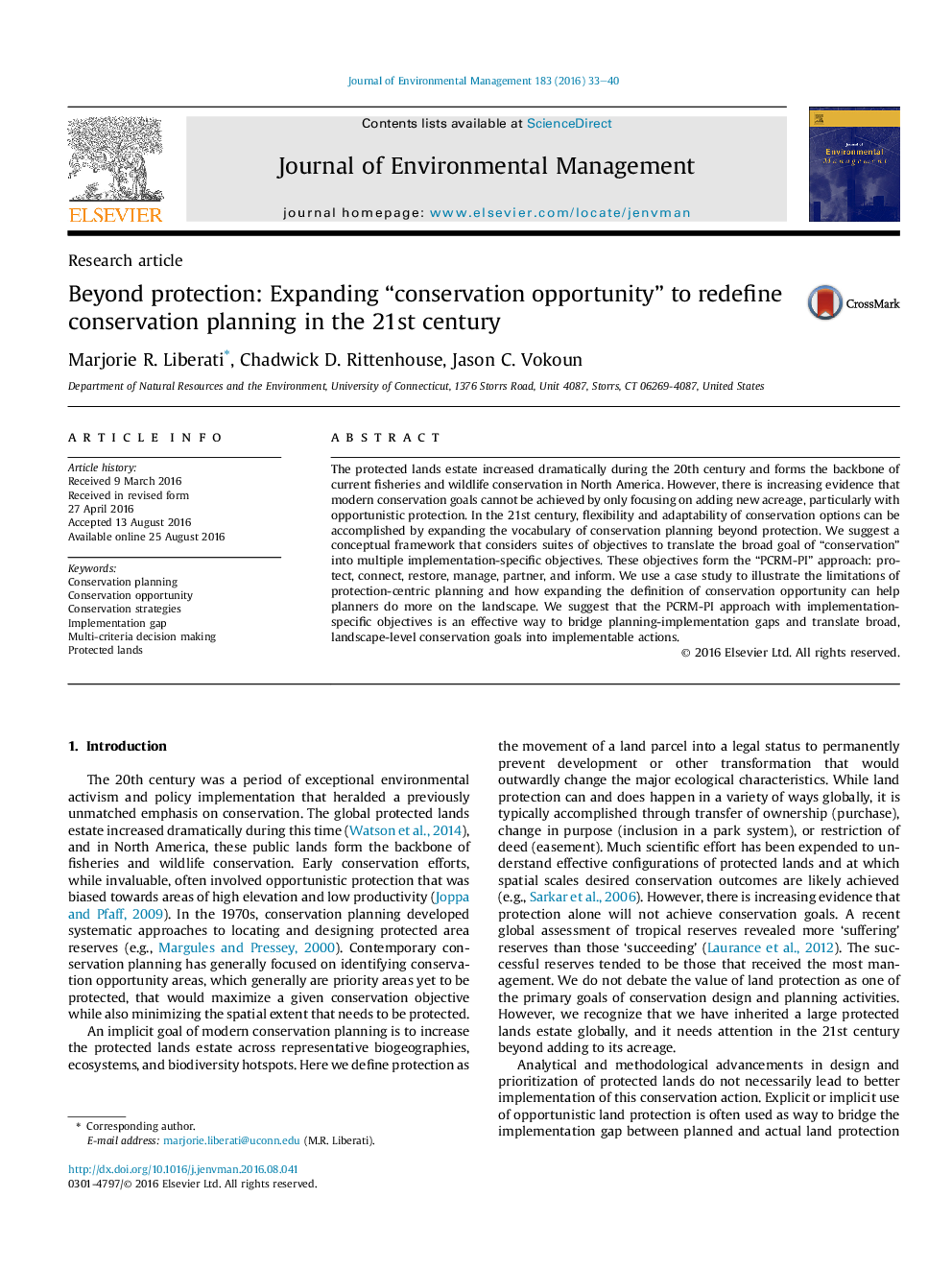| Article ID | Journal | Published Year | Pages | File Type |
|---|---|---|---|---|
| 5117287 | Journal of Environmental Management | 2016 | 8 Pages |
•Conservation planning typically uses protection-centric approaches to conservation.•Protection alone is not sufficient to reach conservation goals for many species.•We propose using a suite of actions that includes management and restoration.•Only multi-objective strategies were able to reach planning goals for our case study.•Our framework offers more partnerships and lands as opportunities for conservation.
The protected lands estate increased dramatically during the 20th century and forms the backbone of current fisheries and wildlife conservation in North America. However, there is increasing evidence that modern conservation goals cannot be achieved by only focusing on adding new acreage, particularly with opportunistic protection. In the 21st century, flexibility and adaptability of conservation options can be accomplished by expanding the vocabulary of conservation planning beyond protection. We suggest a conceptual framework that considers suites of objectives to translate the broad goal of “conservation” into multiple implementation-specific objectives. These objectives form the “PCRM-PI” approach: protect, connect, restore, manage, partner, and inform. We use a case study to illustrate the limitations of protection-centric planning and how expanding the definition of conservation opportunity can help planners do more on the landscape. We suggest that the PCRM-PI approach with implementation-specific objectives is an effective way to bridge planning-implementation gaps and translate broad, landscape-level conservation goals into implementable actions.
